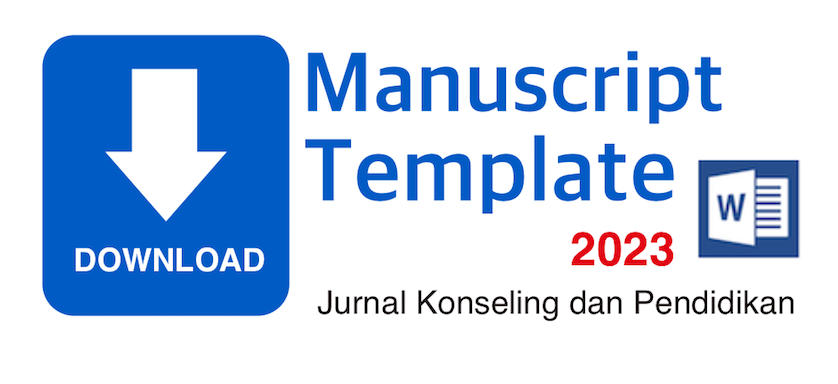Identifikasi Karakteristik Konselor Efektif Berdasarkan Tokoh Punakawan Bagong
 ),
), (1) Universitas Ahmad Dahlan,Indonesia
 Corresponding Author
Corresponding Author
DOI : https://doi.org/10.29210/14400
Full Text:
 Language : en
Language : en
Abstract
Bagong is Punakawan figure. Bagong is one of the local wisdom that comes from Indonesia. Bagong have various characteristics sublime. The purpose of this study was to describe the characteristics of Bagong. Characteristics of Bagong can be referred to a counselor to develop the characteristics of an effective counselor. The identification results show the characteristics of an effective counselor based Bagong figure are (1) genuine; (2) has a sense of humor; (3) the wise in responding to the phenomenon; (4) simple and patient in serving the counselee; (5) honesty; (6) have the view that every individual has a deficiency; (7) has the ability to see a difference value; and (8) gives the freedom to counselee for decision making.
Keywords
References
Achmad, S. W. 2012. Wisdom Van Java: Mendedah Nilai-Nilai Kearifan Jawa. Bantul, Yogyakarta: IN AzNa Books.
Adiputra, S., & Saputra, W. N. E. 2015. Teori Dasar Konseling. Lampung: Aura Publishing.
Albiladiyah, S. I. 2011. Panakawan dalam Pewayangan. Jantra: Jurnal Budaya dan Sejarah, 6 (12): 178-189.
Boeree, C. G. 2007. Personality Theories: Melacak Kepribadian Anda Bersama Psikolog Dunia. Alih bahasa: Inyiak Ridwan Muzir. Jogjakarta: Prismasophie.
Brammer, L. M. 1979. The Helping Relationship: Process and Skills. New Jersey: Prentice-Hall, Inc.
Cavanagh, M. E. 1982. The Counseling Experience: A Theoretical and Practical Approach. Monterey. California: Brooks/Cole Publishing Company.
Christianto, W. N. 2003. Peran dan Fungsi Tokoh Semar-Bagong dalam Pergelaran Lakon Wayang Kulit Gaya Jawa Timuran. Humaniora, 15 (3): 285-301.
Corey, G. 2009. Theory and Practice of Counseling and Psychotherapy. Belmont, CA: Thomson Brooks/Cole.
Dhika. 2013. Mengenal Punakawan dalam Cerita Wayang Kulit. (Online), (http://www.mahardhika.net), diakses 4 Februari 2016.
Dwiandiyanta, B. Y., Wijaya, A. B. M., Maslim, M., & Suyoto, 2012. New Shadow Modeling Approach Of Wayang Kulit. International Journal of Advanced Science and Technology, 43: 95-103.
Elliot, G. R. 2011. When Values and Ethics Conflict: The Counselor’s Role and Responsibility. Alabama Counseling Association Journal, 37 (1): 39-45.
Erford, B. T. 2015. 40 Techniques Every Counselor Should Know. Hoboken, NJ: Pearson Education, Inc.
Feist, J., & Feist, G. J. 2006. Theories of Personality. New York: McGraw Hill.
Flanagan, J. S., & Flanagan, R. S. 2004. Counseling and Psychotherapy Theories in Context and Practice. New Jersey: John Wiley & Sons, Inc.
Goodwin, R., & Giles, S. 2003. Social Support Provision and Cultural Values in Indonesia and Britain. Journal of Cross-Cultural Psychology, 34 (10): 1-6.
Hadi, S. 1990. Metodologi Research. Yogyakarta: Andi Offset.
Hidajat, R., & Pujiyanto. 2014. Open Your Mask: Traditional Paradox of Mask Puppet of Malang, East Java, Indonesia. Asian Journal of Social Sciences & Humanities, 3 (1): 19-27.
Hidayat, H., Yusri, & Ilyas, A. 2013. Profil Siswa Agresif dan Peranan Guru BK. Jurnal Ilmiah Konseling, 2 (1): 1-5.
Humarni, S. 2014. Fungsi Sosial Wayang di Daerah Transmigrasi. (Online), (eprints.ung.ac.id), diakses 4 Februari 2016.
Mann, A. 2010. Gestalt Therapy: 100 Key Points and Techniques. New York: Routledge.
Mappiare-AT, A. 2013. Tipe-Tipe Metode Riset Kualitatif untuk Eksplanasi Sosial Budaya dan Bimbingan dan Konseling. Malang: Elang Mas.
Mastur, Sugihanto, DYP., & Sukiman. 2012. Konseling Kelompok dengan Teknik Restrukturisasi Kognitif untuk Meningkatkan Kepercayaan Diri Siswa. Jurnal Bimbingan dan Konseling, 1 (2): 74-80.
Nelson-Jones, R. 2005. Practical Counselling And Helping Skills: Text And Activities For The Lifeskills Counselling Model. London: SAGE Publications.
Ningrum, D. S., Al Hakim, S., & Winarno, S. 2014. Peran Tokoh Punakawan dalam Wayang Kulit sebagai Media Penanaman Karakter di Desa Bendosewu Kecamatan Talun Kabupaten Blitar. Jurnal Pendidikan Kewarganegaraan Universitas Negeri Malang, 1 (1): 1-11.
Nurgiyantoro, B. 2011. Wayang dan Pengembangan Karakter Bangsa. Jurnal Pendidikan Karakter, 1 (1): 18-34.
Osterlund, L. C. 2014. Wisdom in the Counseling Relationship. Jesuit Higher Education, 3 (2): 74-84.
Prayitno. 2012. Jenis Layanan dan Kegiatan Pendukung Konseling. Padang: Universitas Negeri Padang.
Prayoga, D. S., Fianto, A. Y. A., & Hidayat, W. 2015. Penciptaan Buku Novel Graphic Punakawan sebagai Upaya Pengenalan Warisan Budaya kepada Anak-Anak. Jurnal Desain Komunikasi Visual, 4 (1): 1-9.
Rogers, C. H. 1957. The Necessary and Sufficient Conditions of Therapeutic Personality Change. Journal of Consulting Psychology, 21: 95-103.
Romero, E. J., & Cruthirds, K. W. 2006. The Use of Humor in the Workplace. Academy of Management Perspectives, 20 (2): 58-69.
Rosyid, M. 2013. Membingkai Sejarah Pers Islam di Tengah Terpaan Era Digital. At-Tabsyir: Jurnal Komunikasi Penyiaran Islam, 1 (1): 1-18.
Saputra, W. N. E. 2015. Perbandingan Prokrastinasi Akademik Siswa SMK melalui Penerapan Teknik Cognitive restructuring dan Cognitive Defusion. Tesis tidak diterbitkan. Malang: Pascasarjana Universitas Negeri Malang.
Saputra, W. N. E., & Bhakti, C. P. 2015. Telaah Karakter Ideal Konselor berdasarkan Tokoh Punakawan Semar. Makalah disajikan di Seminar Nasional Bimbingan dan Konseling dengan Tema Konseling Berbasis Multibudaya, Semarang, 22 Desember 2015.
Sen, A. 2012. Humour Analysis and Qualitative Research. Social Research Update, 63: 1-4.
Sharf, R. S. 2012. Theories of Psychotherapy and Counseling: Concepts and Cases. Belmont, CA: Brooks/Cole.
Suharno. 2015. Seni Dalam Bingkai Budaya Mitis: Nilai Life Force dan Transformasinya ke Budaya Ontologis. Jurnal Panggung, 25 (3): 236-248.
Sunarto. 2006. Pengaruh Islam dalam Perwujudan Wayang Kulit Purwa. Jurnal Seni Rupa dan Desain, 3: 40-51.
Suwardi. 2002. Mistik Kejawen di Hotel Natour Garuda. Humaniora, 7 (1): 71-94.
Tavinayati. 2014. Mahabharata dan Ramayana Versi Indonesia dalam Perspektif Perlindungan Hak Moral Pencipta. (Online), (eprints.unlam.ac.id), diakses 4 Februari 2016.
Tukiainen, A. 2010. Philosophical Counselling as a Process of Fostering Wisdom in the Form of Virtues, (Online), (www.society-for-philosophy-in-practice.org), diakses 4 Februari 2016.
Udasmoro, W. 1999. Memahami Karakteristik Unconscious Filosofi Jawa melalui Tokoh Wayang Bima. Humaniora, 12: 28-48.
Warbung, T. 2015. Tinjauan Ikonografi pada Lukisan “Hidup Ini Indah Apapun Keadaannya”. Humaniora, 6 (2): 155-161.
 Article Metrics
Article Metrics
 Abstract Views : 2638 times
Abstract Views : 2638 times
 PDF Downloaded : 912 times
PDF Downloaded : 912 times
Refbacks
- There are currently no refbacks.



